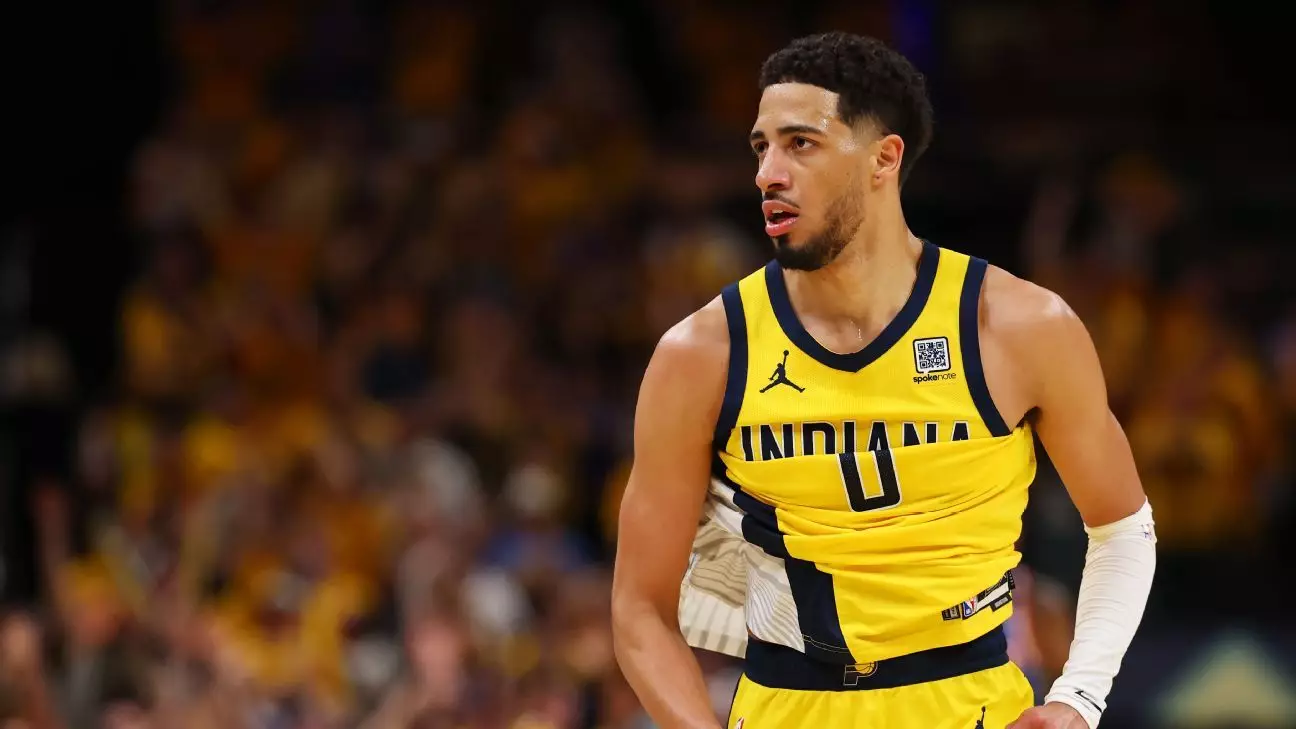In the high-stakes, physically demanding realm of professional basketball, injuries are often dismissed as inevitable misfortunes—an unfortunate roll of the dice in a brutal game. Tyrese Haliburton’s candid reflection on Achilles injuries challenges this narrative, prompting a deeper examination of whether such injuries are truly random or if systemic factors are overlooked. While some embrace the idea of luck as the primary culprit, it’s unjust to dismiss the complex interplay of physical stress, training protocols, and scheduling. Reducing Achilles tears to mere coincidence glosses over a multitude of potentially modifiable elements lurking beneath the surface.
Haliburton’s perspective positions injury as an unpredictable anomaly rather than an endemic flaw in the league’s structure. Yet, this stance warrants scrutiny. Is the sport truly subject solely to chance? Or does the current competitive environment—intense workloads, condensed schedules, and relentless progression—contribute insidiously to athlete vulnerability? Acknowledging bad luck as a piece of the puzzle is one thing; accepting it as the whole story risks neglecting proactive strategies that could, in fact, nip these injuries in the bud.
Questioning the Narrative: Are NBA Schedules Contributing to Injuries?
Commissioner Adam Silver’s assertion that the number of games or minutes isn’t a primary factor in Achilles injuries sparks debate. While it might be comforting for league officials to maintain that injuries result from chance, the data tells a more nuanced story. Achilles injuries tend to cluster in the early part of the season, suggesting a possible link to the cumulative toll of offseason training, preseason intensity, or inadequate recovery time. The compressed nature of NBA schedules, especially with back-to-back games and international stretches, arguably leaves less room for proper conditioning and healing.
Moreover, the focus on game count overlooks the subtler aspect of player workload management. The modern athlete’s body endures relentless stress, often pushing the limits due to contractual pressures and competitive demands. Haliburton himself was battling a calf strain, yet still entrusted to play in Game 7—highlighting the complexity of injury etiology. Could this tendency to push through discomfort inadvertently predispose players to more severe injuries like Achilles tears? The link between push-back culture in professional sports and injury risk warrants a critical reassessment.
Luck vs. Prevention: The Role of Systemic Factors in Achilles Injuries
At the heart of this discussion is whether injuries like Haliburton’s are primarily products of random bad luck or if they reflect systemic vulnerabilities. While an element of chance—such as sudden overstress or unforeseen physical breakdowns—cannot be dismissed entirely, it’s shortsighted to accept it as the sole explanation. Advances in sports medicine, biomechanics, and load management suggest that many injuries are preventable with better strategies.
For instance, controlled training programs emphasizing eccentric strength, proper recovery protocols, and individualized load management have demonstrated promising results. The fact that Haliburton played on a calf strain that was not fully resolved raises concerns about the thresholds for risking further injury. Teams, trainers, and league officials have a collective responsibility to minimize such risks through scientific, data-driven approaches rather than resignation to fate. The hope is that acknowledging the multifaceted origins of Achilles injuries will catalyze meaningful change—shifting the focus from reactive treatment to proactive prevention.
Implications for the Future of Player Health and League Policies
The broader lesson from Haliburton’s injury story and the ongoing debate is the urgency for the NBA and its players to reevaluate their approach to health. Relying solely on luck and accepting injuries as unavoidable can foster complacency, undermining efforts to safeguard athletes. Instead, the league should prioritize implementing comprehensive load management policies, adopting the latest sports science innovations, and fostering a culture where player wellness is paramount.
Haliburton’s own rehabilitation journey and his desire to deepen his basketball intellect exemplify a proactive mindset. By embracing injury as an opportunity for growth—both physically and mentally—players and teams can better prepare for future seasons. This mindset shift is crucial, not only for extending career longevity but also for preserving the integrity of the game itself. The fight against injuries like Achilles tears isn’t about eliminating risk entirely—an impossibility in any sport—it’s about systematically reducing that risk through smarter, science-backed practices.
Viewing injuries as mere bad luck perpetuates a flawed narrative that absolves organizations from accountability. Instead, a critical and open-minded approach reveals that systemic changes, strategic workload management, and preventative measures hold the key to transforming the health landscape of the NBA. Embracing this reality may well be the most powerful step toward a future where athletes can perform at their peak without the shadow of preventable injury looming overhead.

